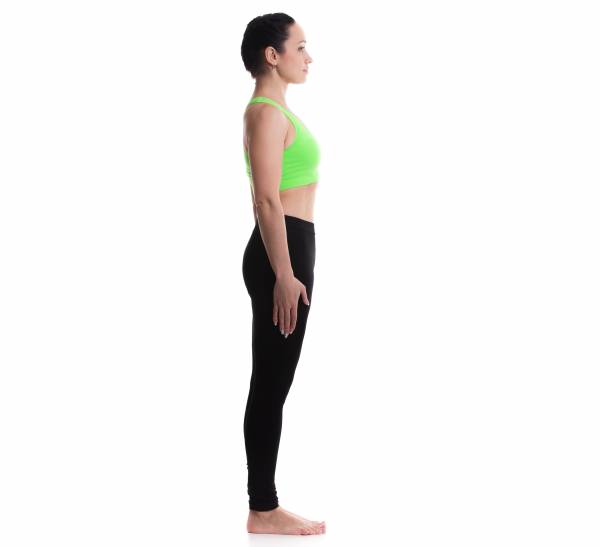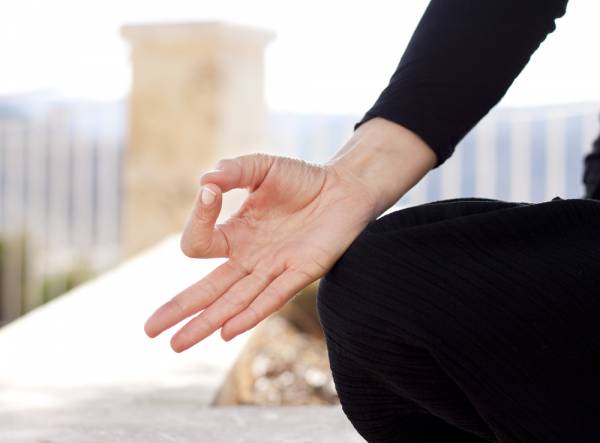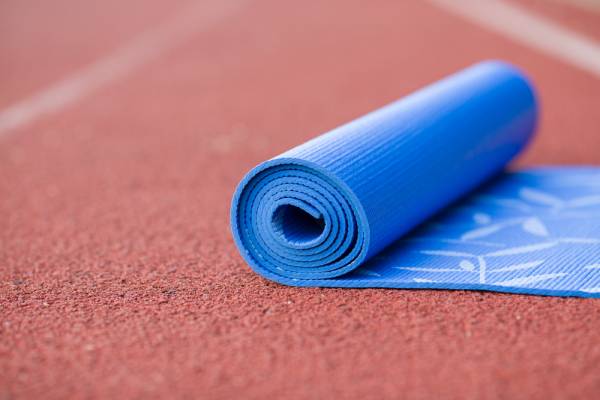One day during an afternoon trail run, it suddenly hit me that I was not only running, but I was also practicing yoga – simultaneously. I know there’s a lot of information out there about yoga before and after running, but I had never encountered anything about yoga practice during.
This was pretty cool, so I took some mental notes and began examining the details of the experience. Here’s where I discovered yoga in my running, and how you might try incorporating it, as well.
Steady, Even Breath
First of all, I’m breathing in a specific way. The breath is even. In Sanskrit this is called sama vritti, which translates as “equal breath” because the inhale and exhale match in length and intensity. This type of pranayama (conscious breathing) relieves stress, quiets the mind, and encourages deeper concentration.
“I’m mindful to control the transition between the inhale and exhale so the sound is soft. I find this calms my whole nervous system.”
When running, our tendency is to push out the exhale, which takes up excess energy. I’m mindful to control the transition between the inhale and exhale so the sound is soft. I find this calms my whole nervous system. I inhale as slowly as I can through my nose and then exhale as slowly as I can through the mouth. (This is a variation to the yogic breathing that is done in and out through the nose.)
Mountain Pose
With my breath steady, I can focus on more sophisticated actions within my body, such as how the weight is landing on my feet. I use tadasana (mountain pose) awareness to balance the weight between the base of my big toe and pinky toe on each foot. This keeps me from pronation (too much weight on the inner foot) or supination (too much weight on the outer foot).
I also track my knees over the second and third toe area of my foot so the hip, knee, and ankle stay in optimal alignment reducing stress on the joints. Any turning in or out of the knee affects the hips and pelvis, causing muscle tightening that leads to increasing strain in proportion to distance.

Tadasana, or mountain pose, fosters good alignment while running.
In addition, I find the following actions connect when I’m running to give me greater access to my lower abdominal muscles and more length through the spine:
- A slight internal rotation of the thighbones in the hip sockets (turning the thighs out compresses the sacrum and lumbar spine areas)
- Drawing the navel up, and drawing the bottom front ribs down (in essence shortening the space between the bottom front ribs and the navel)
These actions combined engage the lower abdominals and allow me to lengthen upward from the lowest point of my spine without muscular effort. It also keeps my lower back spacious.
Just be mindful when you try this that the internal rotation of the thighs doesn’t cause your knees to go out of alignment. You’ll find you can turn the thighbones in and rotate the knees slightly out to correct any over compensation.
Chest and Shoulders
Another thing I’ve struggled with over the years is over rounding the shoulders and pitching forward with the chest. The head is heavy so this can really drag you down when running. I used to correct this with musculature effort. Now, with the breathing I described earlier, I let my breath do all the work.
“When I inhale, the chest automatically lifts and the collarbone area widens. On the exhale, I keep my chest open and the shoulder blades naturally soften down.”
When I inhale, the chest automatically lifts and the collarbone area widens. On the exhale, I keep my chest open and the shoulder blades naturally soften down. It feels amazing, and all the energy that used to go into keeping my chest lifted is now available for running. I also add a little nodding down of the chin to keep the back of the neck (cervical spine) long.
Gyan Mudra
Now, to the hands. I incorporate a mudra (energy seal) called gyan mudra. It’s formed by placing the tip of the thumb and the tip of the index finger together. In the traditional gesture, the remaining three fingers are extended. But for the purpose of running I keep the fingers curled. So my hands are in a soft fist with the tip of the thumb and index fingers together. If you’re worried about looking silly, no need – it’s barely noticeable.

Use gyan mudra while running to circulate energy and help maintain focus.
This mudra, with the thumb and index fingers forming a circle, helps to keep our energy more internal. In essence, it recirculates our energy without letting it spill out. In the yoga philosophy, the thumb represents supreme reality (Brahman). The index finger represents individual identity (jiva). With this in mind, I derive additional energy and endurance by imagining I’m connected to something greater than myself. It’s exhilarating.
And if this explanation doesn’t resonate with your beliefs, then just think of this mudra as a way to induce the infamous runner’s high. I find that it really does.
Don’t Forget the Eyes
Now for the eyes, the gaze or drishti. As much as possible, I try not to waste energy by looking from side to side (unless I need to for safety reasons). I keep my gaze straight ahead. I focus on softening my eye muscles so there’s no strain. Remembering that any energy I use for extraneous things takes away from my energy reserve for the task at hand. In this case, running. This type of gaze also calms the mind and sends a signal to the nervous system that everything is okay. This alleviates any residue of anxiety, which again depletes my energy level.
Mental Energy
Finally, I watch my mind. Not just the thoughts occurring, but the energetic tone or vibration of my mind. I’ve found that mental states we would consider negative deplete my energy, while states considered positive increase my energy level. With any thoughts that cause emotions such as anger, fear, or worry, I immediately notice more fatigue and/or stiffness in my body. With thoughts that induce joy, inspiration, or gratitude, I feel a surge of energy and a spring in my step.
Perfect Partners
Several years ago, if anyone asked me if you could practice yoga while running, I probably would have laughed and said, “No way.” Back then I thought of yoga more as poses. But as my understanding of yoga expands, I realize more and more that I’m practicing yoga all the time in more subtle ways.

Yoga and running are the perfect partners. Running gives me the opportunity to refine my practice and take it off the mat. And the mindfulness and balance that yoga brings to running allows me to enjoy my running to the fullest while avoiding many of the downsides often associated with it.
With yoga at the helm, running becomes steady and easeful – the perfect asana (yoga pose), which according to the yoga sutras, is “a steady, comfortable posture.” (sutra 2.46)
Further Reading:
- 25 Yoga Poses That Will Make You a Better Runner
- Yoga Is for All Athletes: Start Your Yoga Practice Today
- Post Run Yoga Flow for Flexibility and Strength
- New on Breaking Muscle Today
Photos courtesy of Shutterstock.






